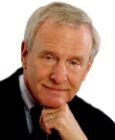DSM
DSM-5 and Child Neglect and Abuse
Other conditions that may be a focus of clinical attention.
Posted February 1, 2014 Reviewed by Ekua Hagan
Key points
- Child abuse and neglect have been understood for decades as major etiological sources of aberrant behavior.
- The well-described phenomena of child abuse and neglect are buried in the back of DSM-IV and DSM-5.
- Elevating the status of of child abuse and neglect in the DSM would encourage more research and aid in treatment of childhood psychopathology.
Clinical situations that child psychiatrists too frequently encounter in the inner cities resemble this composite case of a young school-aged child born to a drug-addicted mother and living with her for the first several months of life:
The child’s physical needs and psychological needs are neglected by the addicted mother. The father is not known. The child fails to develop physically and is placed in a series of foster homes over the next several years, where his/her psychological needs for stability, affection, and age-appropriate stimulation are not met.
Although the child gains strength physically, the child develops behavior problems that are difficult to manage. The child is hyperactive, defiant, and is delayed in language and social skills. At age 4, the child is sexually abused by an adult at one of the foster homes.
Finally, the child is adopted, and the adoptive mother brings the now 7-year-old child to a mental health clinic for help in managing the child’s behavior problems, learning difficulties, and symptoms of depression.
What is the child’s diagnosis? Although the child may meet the criteria for the diagnosis of ADHD, oppositional defiant disorder, and depression, the child’s most compelling difficulty is his/her history of neglect and abuse that has taken place in one guise or another over the child’s life. The child’s history is the problem. Where can you find such a diagnosis in DSM-IV or DSM-5?
The condition can be found at the end of the lengthy section on diagnostic criteria in DSM-5. On page 715, there is a brief section called “Other Conditions That May Be as Focus of Clinical Attention.” These conditions merely affect mental disorders; they are not mental disorders themselves, and, per DSM-5, they cannot be treated as mental disorders. In the DSM-5 coding system, they receive a “V code” designation and in general are non-reimbursable by insurance companies.
Conditions found in this section include Child Physical Abuse, Child Sexual Abuse, Parent-Child Relational Problems, Child Affected by Parental Relationship Distress, Child Psychological Abuse, Spousal Violence, and others. These conditions encompass a large portion of the difficulties that child mental health personnel attempt to address. The problems themselves are relatively neglected in the DSM-5 system.
That DSM-5 does not regard them as mental disorders may reflect in part the DSM-5 definition of mental disorders. In general, DSM-5 reserves mental illness for disorders within an individual. The system does allow for some influence of the external world, such as adjustment disorder and post-traumatic stress disorder. Problems between people are more awkward for the DSM-5 system to manage as it is designed for the diagnosis of individuals.
In the October, 2013, issue of the American Journal of Psychiatry, Teicher and Samson reviewed the psychiatric literature on physical abuse, sexual abuse, neglect, and psychological abuse on the diagnoses of anxiety disorders, depression, and substance abuse disorders in children and adults.
Those children who had been abused or neglected had the most severe forms of the disorders studied. Those who had psychiatric disorders and had been abused had measurable changes in their brains, while those with disorders but no history of abuse had no brain changes. Those with a history of abuse and a psychiatric disorder often responded to different treatments from those without a history of abuse.
Some of the findings with regard to depression with and without an abuse history will be described to illustrate the clinical importance of a history of abuse. According to Teicher and Samson, those who were depressed with a history of abuse had changes in their brains not found in those who were depressed without a history of abuse. Those who were depressed with a history of abuse had more severe depression, developed depression at an earlier age, were more suicidal, and responded to treatment differently from those who were depressed but free of a history of abuse. Those who were depressed with a history of abuse responded less well to antidepressant treatments than those who were depressed without a history of abuse. Those who were depressed with a history of abuse responded better to psychological treatment of depression (CBT) than those who were depressed without a history of abuse. According to Teicher and Samson, the history of abuse seemed critical in predicting the response of depression to treatment.
Child abuse and neglect have been understood for decades as major etiological sources of aberrant behavior. It is perplexing that these well-described phenomena are buried in the back of DSM- IV and DSM-5. Based on scientific support for their importance in the development and treatment of childhood psychopathology, elevating the status of these V codes would encourage additional clinical attention and research.
Copyright Stuart L. Kaplan, MD, 2014




